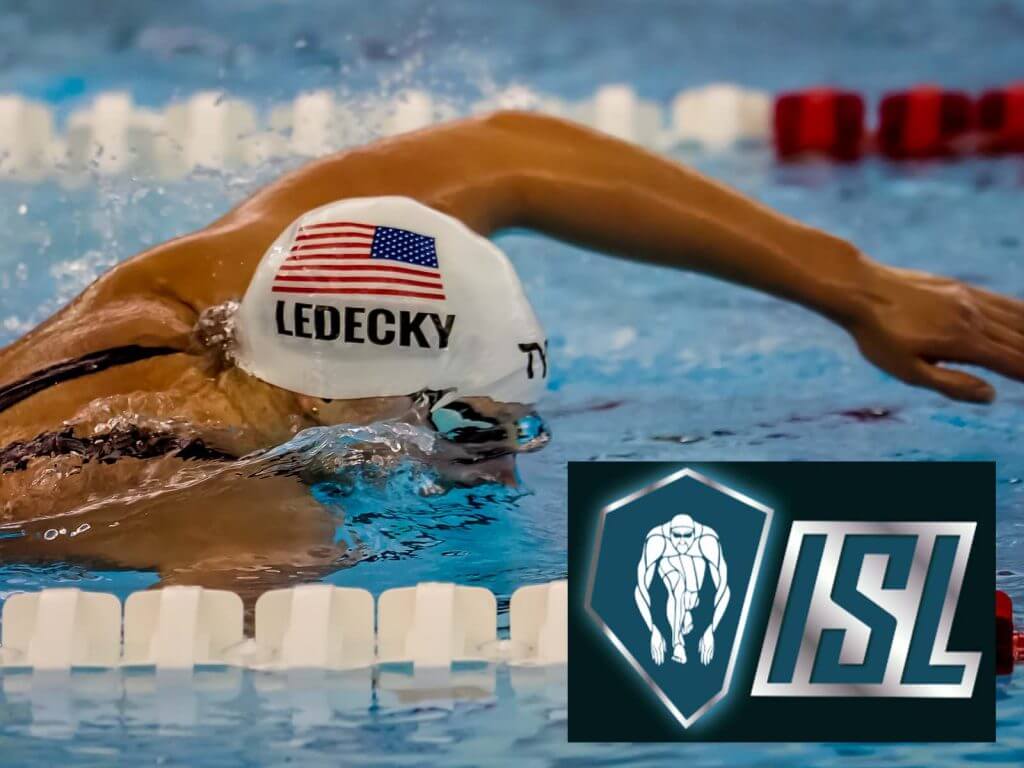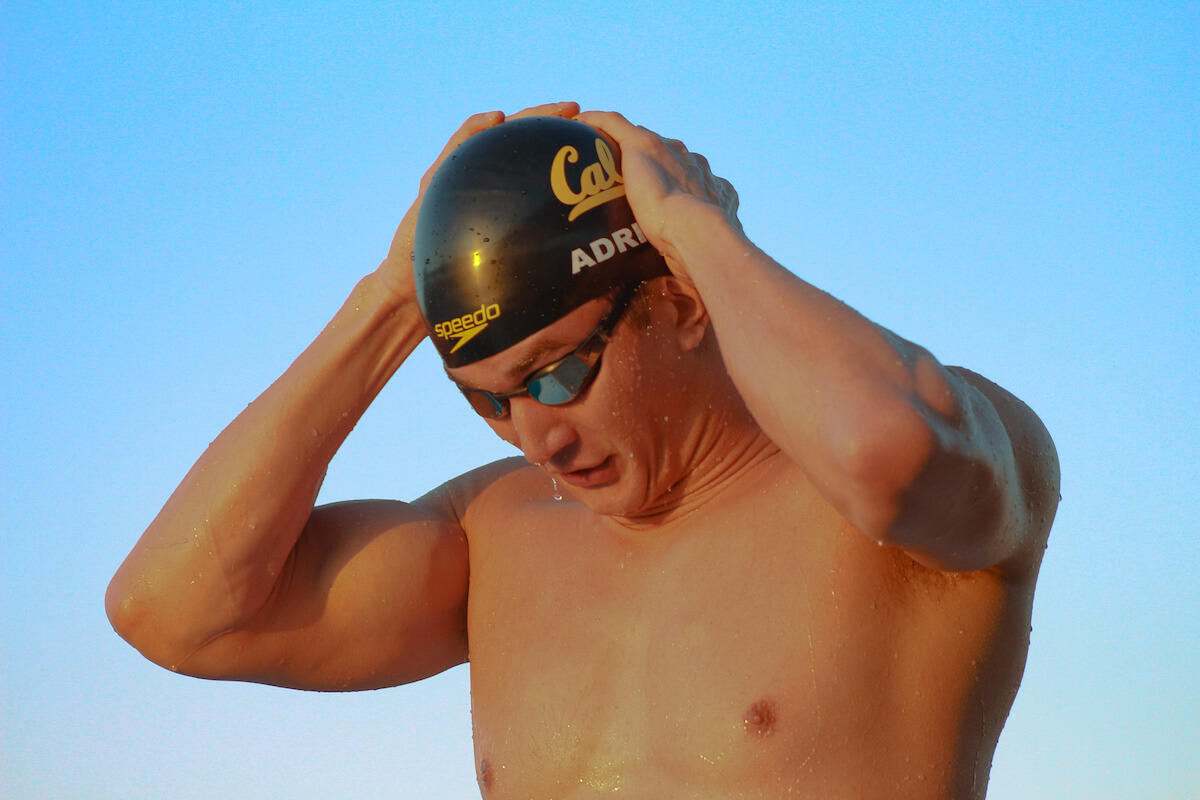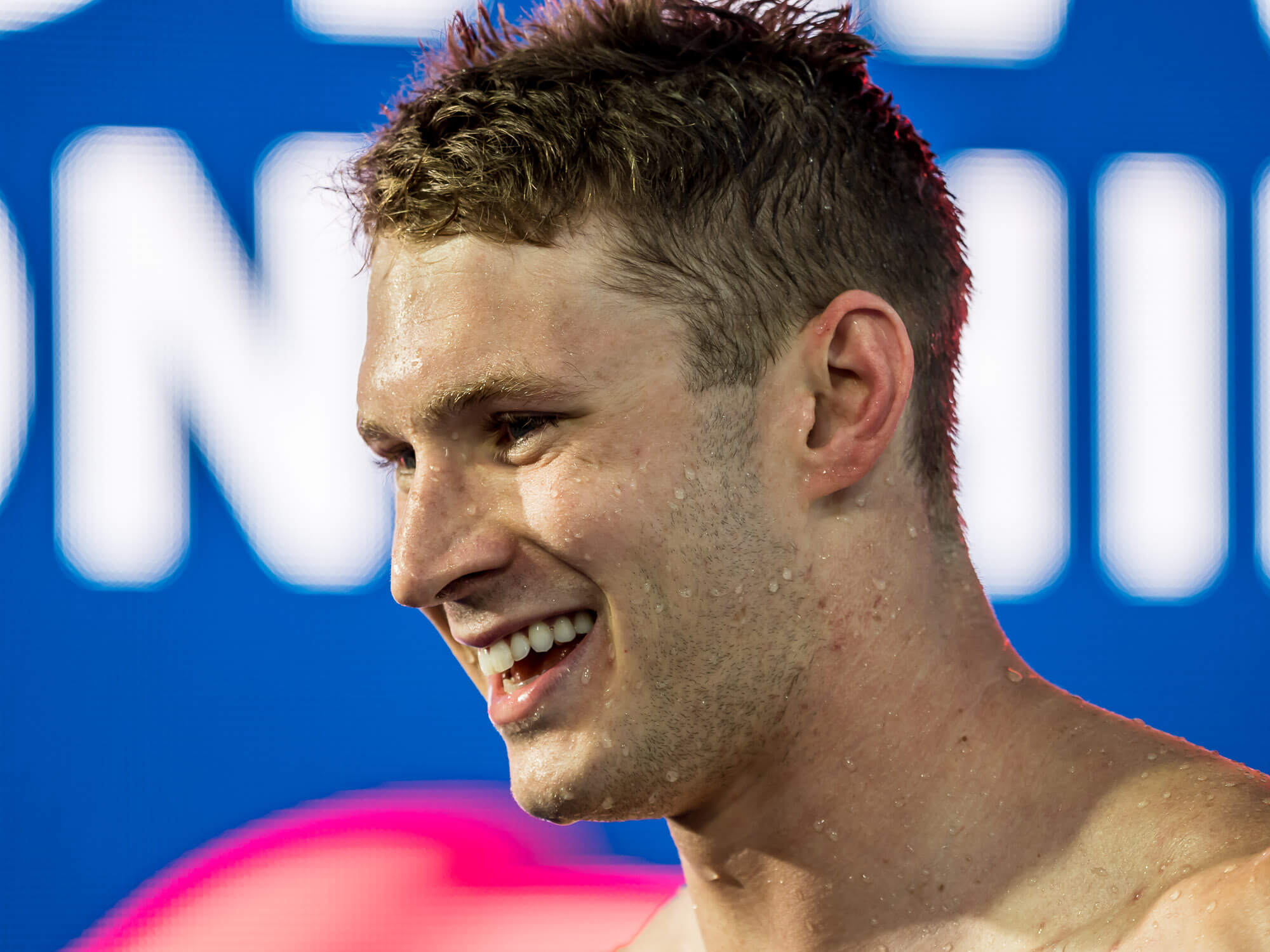What Will It Take for the International Swimming League to Succeed?

The International Swimming League is here. For the first time ever in 2019, it’s happening.
The concept of an organized racing circuit, the sort that could give elite swimmers real opportunity outside of the Olympics and other annual global and regional championships, has existed for years in fantasy and more recently in some press releases from Ukrainian billionaire Konstantin Grigorishin, but now, there are names, dates, places and even teams.
It’s almost surreal, a concept so long imagined finally coming to reality. The goal? Change the paradigm of swimming. Create a team-based swimming league that provides swimmers a real opportunity to make a living from the sport based on appearance fees, marketing and prize money.
“Swimming is maybe the best sport. It’s the most popular Olympic sport—hundreds of millions of people are watching swimming during the Olympic Games. At the same time, it’s a very poor sport,” Grigorishin said. “What’s wrong with swimming? It was a challenge for myself.”
So Grigorishin considered his options and eventually settled on the eight-team league that will begin next October with a wave of cheery optimism.
“We have some of the hardest-working athletes in the world, and they deserve more than they have gotten,” said Lenny Krayzelburg, a four-time Olympic gold medalist and the general manager of the ISL’s Los Angeles Current. “This is going to put the sport of swimming on the forefront, not just in the Olympic year but every year.”
But will it work? Will this upstart league truly change the sport? That remains to be determined.
The 2019 Debut Season

Nathan Adrian will serve as a U.S. ambassador for the International Swimming League — Photo Courtesy: Taylor Brien
The ISL will debut two months after the World Championships, traditionally a downtime in terms of significant international competition aside from FINA’s oft-maligned World Cup series. That seems like perfect timing, when the competition will barely interfere with training for the key competitions of the following summer.
Unlike any other major professional competition swimming has seen before, team will come first. Swimmers will be charged to score points for their team (one of four Europe-based clubs or four U.S.-based clubs) and not worry about their times.
“Actually, we don’t care about time,” said Dmytro Kachurovskyi, ISL’s Director of Development. “We even tried to not use time. Athletes and coaches, they want to have times. We are doing that in their interest. They want to have the time. For us, they just try to win and help their team get scores and win their meet. “
Why do the powers behind the ISL think this format will work? Because fans will support their respective teams, not just individual swimmers.
“If you are a fan of Michael Phelps, you can watch him only two minutes. That’s all,” Kachurovskyi said. “So you will not go with your family to the swimming pool for those two minutes. The other swimmers, they are not interesting to you. You are not fans of them.
“But if you have your team, you will not know until the last moment who is the winner. You will be engaged 45 minutes, one hour, two hours, and our format is two hours with a break for the show. That is the concept which should work, from our understanding.”
The fall of 2019 begins the pre-Olympic season, a time when the world’s best swimmers might be less willing to commit to a new racing endeavor, let alone one that isn’t long course—and perhaps potential sponsors might be similarly reluctant to get behind the ISL given that timing.
So far, the ISL has not revealed any information about sponsorship or broadcast deals. Grigorishin said that he had to keep broadcast negotiations confidential before adding that “we have interest from broadcasters.” Still, the lack of firm commitments six months out is troubling.
Swimmers, on the other hand, have been eagerly signing up for the ISL, even in the Olympic year. The majority of top pros in the U.S. either have committed or are expected to commit to the league.
It’s worth noting, though, that swimmers are actually making a minimal commitment for 2019: Three one-day meets over the span of two months and then a potential two-day championship event, which will fall right before the beginning of all-important Christmas training.
One ISL-signed swimmer signed pointed out that the commitment is similar to what an NCAA swimmer also preparing for the Olympic season would have to handle during the same time period. A few extra short course meets? Not that big a deal, even for the Olympic season, even with some rest and taper involved.
The championship event is slated to be held in late December at a temporary pool at the Mandalay Bay Events Center, a 12,000-seat arena that typically hosts the Las Vegas Aces of the WNBA. If that meet sells out, it would be the largest crowd to ever attend a swim meet on U.S. soil outside of three Olympic Trials meets held in Omaha, Neb., in 2008, 2012 and 2016. There’s an upside here for swimmers receiving substantial attention that could boost their profile headed into the Olympic summer.
But there has been plenty to like about other championship-level swim meets, too, like the FINA World Championships or the NCAA Championships. None have been able to break into mainstream news cycles with any regularity, only sneaking through for the general population to notice after historically significant performances, like those from Katie Ledecky and Caeleb Dressel in recent years or Phelps before that.
Grigorishin and Kachurovskyi both admire the team-based style of the NCAA championships and how swimmers strive to contribute to their team’s cause rather than worry about times, and fans of swimming love following the drama of college swimming. But that all exists in a limited sphere, far from the Olympic-level following the ISL is hoping to attain for its meets.
That’s the reality of the swimming world the ISL is entering in 2019.
How About Long-Term?
The ISL season will be extended in 2020, when the Tokyo Olympics are done and swimmers can put more of their focus onto the ISL. But then the Olympic cycle begins anew, with 2024 less than four years away. Long-term, the visionaries behind the ISL would like to see a paradigm shift, to a world where the Olympics aren’t by far the most important swim meet in the world.
For the majority of current elite swimmers, no professional swimming circuit is about to usurp the Olympics from its perch as the ultimate goal. Young swimmers grow up watching the Olympics, and they remember seeing their heroes in Rio or Tokyo or Beijing. In the best-case scenario for the ISL, it will take at least a few generations to make their league the be-all, end-all for the world’s best swimmers.
“Of course, it will not be tomorrow. It will take some time. It should be like basketball or football or soccer or tennis, where the Olympics is one of the competitions but it is not the competition,” Kachurovskyi said. “This generation is happy to start that process.”
Consider hockey and basketball, Olympic sports where the competition is secondary to what goes on in the main pro leagues. When the National Hockey League refused to suspend its season for the 2018 Olympics, the top men’s hockey players in the world didn’t get to go to the Olympics. Some weren’t thrilled, but their lives went on. The Olympics were secondary.

Ryan Murphy will be a U.S. ambassador for the ISL — Photo Courtesy: Peter H. Bick
In 2019, the league will support 12 male and 12 female swimmers for each of eight teams, a total of 192 swimmers—more than the total that swam in individual Olympic finals in 2016. And that’s professional swimmers, so it doesn’t include those elite swimmers who maintains their amateur status for purposes such as NCAA eligibility.
That means there’s room on those rosters for a new breed of professional swimmers, some of whom aren’t in contention for Olympic medals or even Olympic berths. These could be swimmers coming off accomplished college careers less success in long course. Some, particularly sprinters, could even work real-world jobs while training part-time and showing up to the meets. That’s much more feasible to pull off in short course than in the less-demanding crucible of long course.
Of course, it’s impossible to avoid the elephant in the room: Is this even going to work? Plenty of startup leagues across sports have come and gone. Just last week, a promising spring football league called the American Alliance of Football abruptly folded, leaving players cut off and stranded across the country.
If ultimate success for the ISL would be becoming swimming’s signature event, rock bottom would be abruptly folding like the AAF. The likely scenario? Something in between.
For the ISL to succeed, the league will need a year-round fanbase comparable to swimming’s Olympic fanbase. That means real support behind each of the clubs in the United States and around the world—and that will take time.
For now, there’s an abundance of optimism surrounding the ISL of what it could become—the potential opportunities for swimmers, a steady stream of income, real drama in the sport and real interest besides just every four years.
Think how major pro sports in the U.S. have made themselves year-round stories, with constant transactions involving players being drafted, signing with teams and being traded. How long will commitments to ISL teams last? Will there eventually be a draft? Can swimmers be traded?
Yes, the ISL could be something great and paradigm-shifting for swimming—or not. Over the next few years, the swimming world will find out. For now, no one truly knows for sure.




